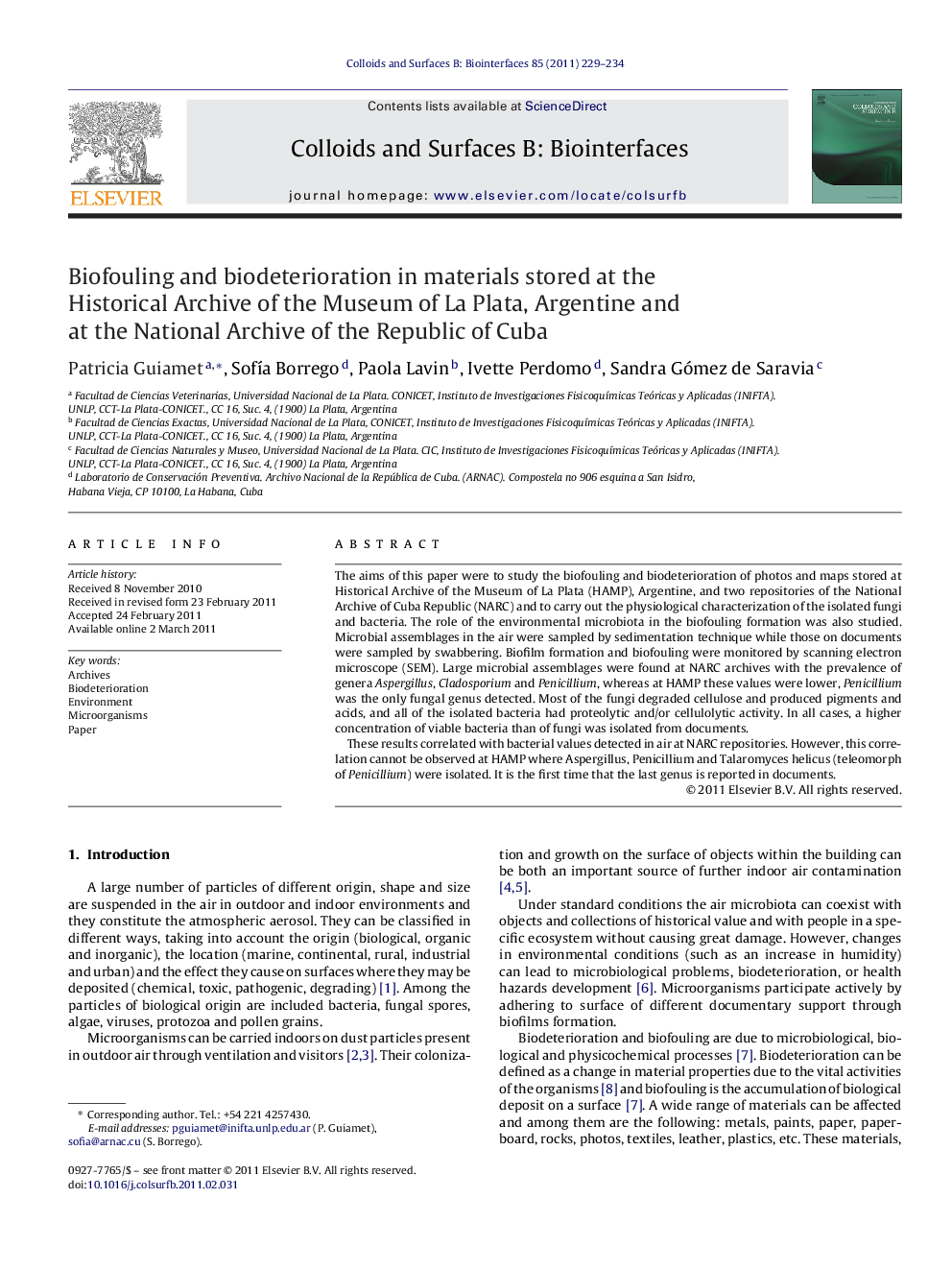| Article ID | Journal | Published Year | Pages | File Type |
|---|---|---|---|---|
| 601249 | Colloids and Surfaces B: Biointerfaces | 2011 | 6 Pages |
The aims of this paper were to study the biofouling and biodeterioration of photos and maps stored at Historical Archive of the Museum of La Plata (HAMP), Argentine, and two repositories of the National Archive of Cuba Republic (NARC) and to carry out the physiological characterization of the isolated fungi and bacteria. The role of the environmental microbiota in the biofouling formation was also studied. Microbial assemblages in the air were sampled by sedimentation technique while those on documents were sampled by swabbering. Biofilm formation and biofouling were monitored by scanning electron microscope (SEM). Large microbial assemblages were found at NARC archives with the prevalence of genera Aspergillus, Cladosporium and Penicillium, whereas at HAMP these values were lower, Penicillium was the only fungal genus detected. Most of the fungi degraded cellulose and produced pigments and acids, and all of the isolated bacteria had proteolytic and/or cellulolytic activity. In all cases, a higher concentration of viable bacteria than of fungi was isolated from documents.These results correlated with bacterial values detected in air at NARC repositories. However, this correlation cannot be observed at HAMP where Aspergillus, Penicillium and Talaromyces helicus (teleomorph of Penicillium) were isolated. It is the first time that the last genus is reported in documents.
Graphical abstractFigure optionsDownload full-size imageDownload as PowerPoint slideHighlights► Biofouling and biodeterioration of photos and maps. ► Historical Archive of the Museum of La Plata. ► National Archive of the Republic of Cuba. ► Bacteria and fungi with proteolytic and/or cellulolytic activity.
